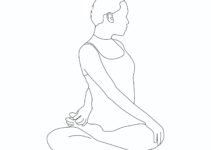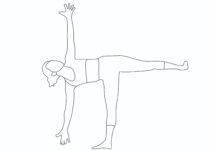
What is meditation?
Meditation is also known as Dhyana. Dhyana has been taken from the Sanskrit word Dhi, which means to contemplate, reflect, think, or be occupied in thought. The meaning of Meditation or Dhyana has been appropriately described by the greatest yoga thinker, Maharishi Patanjali, who is also the Father of Yoga.
“An incessant flow of attention on the concentrated object is called Dhyana or Meditation.”- Maharishi Patanjali.
Scientifically, meditation means the unification of the conscious union (Yoga) of an individual soul (Jeevatma) with the universal soul (Paramatman). In meditation, we try to free our mind from disturbing, distressing, and distracting emotions, thoughts, and desires. Meditation is an uninterrupted flow of mind towards a particular object.
How to do Vipassana Meditation?
For practising meditation, specific meditation tips are of utmost importance to have the best benefits of Dhyana. Some yoga meditation tips are mentioned here, which help to fulfil the better enlightenment of Yoga dhyana. Along with Dhyana Yoga poses, meditation tips for a place, time, diet, seasons, surroundings, and environment are essential in controlling the mind and facilitating inner transformation. These are the crucial preliminary aspects besides yoga poses that assist the mind & body and prepare the practitioner for performing higher yogic practice. i.e. meditation.
Space for meditation
The selection of place plays a vital role in meditation. One should opt for sites free of disturbances or with minimum disruptions. In ancient times, Dhyana was generally performed under the shade of a banyan tree or temple on the bank of the river. Even this is possible now in villages. But in towns and cities, one can prefer a surrounding or a room which is calm and clean with minimum disturbances. A conducive environment itself leads to the quest for spiritual enlightenment.
Meditation seasons
Meditation can be performed in any season or suitable time because the surrounding environment is almost free from disturbances. However, the Vasanta and Sharad are very conducive seasons for practising Dhyana. In these two seasons, the temperature is favourable, and there is a chance of maximum health benefits.
Suitable time for meditation
Time is one of the essential factors while doing meditation. As per ancient rishis and yoga gurus, the Dhyana time has been divided into four crucial durations: sunrises (Brahma Muhurta), Noon, Sunset, and midnight. But if we visualise the yogic aesthetic beauty, the time before sunrise is the most appropriate time for practising meditation. The Brahma Muhurta (before sunrise) is used by great Yoga saints, gurus, and rishis. This time offers the maximum physio-biological advantage of mediation to the yoga practitioners (sadhaks).
Role of diet in meditation
Diet is one of the essential domains for practising Yoga or meditation. One should take food before two to three hours of performing yoga. Foods have been divided into three groups as per yogic ancient scriptures. These three categories of food are Satvik, Rajasik, and Tamasik. In yoga, the Satvik or Mitahar is the preferred food as it is suitable for the digestive system and suits the taste buds. The other two groups, i.e. Rajasik and Tamasik, which comprise spicy, oily, sour, hot, tasteless, and stale diets, are discouraged in Yoga. According to the diet schedule, our stomach should fill with 50% food and 25 % water; the rest, 25%, should be empty.
Yoga and mediation
Yoga asanas and Yoga poses are the most vital components of meditation. Certain yoga poses are needed to ensure focus and concentration during meditation. Yoga poses, and asanas help open the energy channels and psychic equators. Yoga asanas can bring steadiness, calmness, physical & mental health, mental fitness, mental equilibrium, etc., along with agility, energy, vigour, balance, endurance, and vitality.
Now, the question is raised: what are the different yoga poses and asanas used for performing meditation? These different yoga poses for meditation are Siddhasana (the accomplished posture), Padmasana (the lotus posture), Muktasana (the liberated stance), Swastikasana (the auspicious posture), Sukhasana (the easy posture). One thing should be remembered in all these dhyana yoga poses: the performer should follow an erect posture.
Siddhasana Yoga Pose for Meditation
Siddhasana is the best yoga pose for practising meditation. Since Siddhasana is extremely useful for prayer, worship, pranayama, Samadhi, and meditation, it is known as the perfect yoga asana out of the 84 lakh yoga poses. Siddhasana is also known as the Accomplished Posture, which helps to calm the unsteady and undisciplined mind.
Padmasana for Dhyana
Padmasana is the Lotus yoga posture, which has its relevance in meditation. This asana is used for meditation, prayer, worship, and pranayama. As far as well-being is concerned, Padmasana is more important than Siddhasana. Siddhasana and Padmasana are the foremost among the 84 lakh asanas.
Sukhasana for Meditation
Sukhasan is also called the Easy yoga pose, as one can sit for longer in this pose. Since performing Siddhasana or Padmasana is more challenging than considered. In this case, one may opt for Sukhasana for meditation, prayer, and pranayama. This yoga for meditation is preferred for those who have less flexibility yoga.
Pranayama Vs meditation
How Pranayama helps in meditation is the question before the minds of many people. The relationship between Pranayama and meditation is well-knitted, which leads to healthy living and spirituality. Pranayama is the connecting link between Asana and Meditation. Pranayama ensures better coordination between mind and body to facilitate meditation. Pranamaya helps in inner transformations and puts greater thrust on the synergy of body, mind, and soul. Yoga pranayama, such as Nadi Shodhana Pranayama, Bhastrika Pranayama, and Bhramari Pranayama, is beneficial before meditation.
How does Pranayama help in meditation?
Nadi Shodhana Pranayama and Dhyana
Nadi Shodhana Pranayama purifies the Nadis (subtle energy channel). Nadi Shodhana Pranayama, also known as Anuloma-Viloma, is very beneficial in attaining self-realisation and removing the blockages. It calms the mind and stimulates the calming centres of the brain, thereby helpful in the meditative process.
Bhastrika Pranayama for Meditation
The breathing mechanism of Bhastrika pranayama can be compared with the pumping of a pair of blacksmith’s bellows. In Bhastrika pranayama, both inhalation and exhalation are forceful. Bhastrika pranayama helps invigorate the brain and awakens the dormant centres of brain regions, i.e. cerebrum, cerebellum, and medulla oblongata.
Bhramari Pranayama and Dhyana
Bhramari pranayama is one of the most incredible ways to calm down the brain centre. It is as effective as Siddhasana or Padmasana before practising meditation. In Bhramari pranayam, exhalation is performed as the sound of black bees (humming sound) after inhalation. It helps to soothe the mind and is an excellent preparatory stage for meditation.





